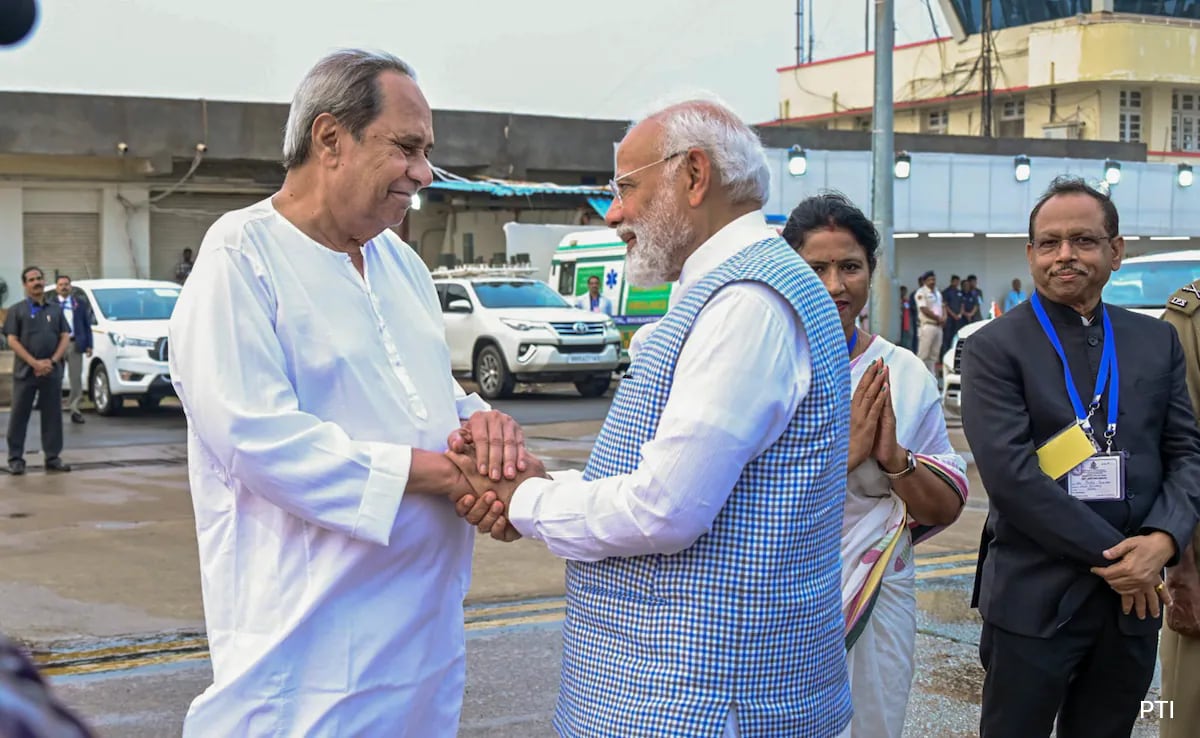
According to sources, the alliance talks hit hurdles primarily over seat-sharing ratios.
New Delhi:
The much-anticipated pre-poll alliance and seat-sharing talks between Odisha’s ruling Biju Janata Dal (BJD) and the Bharatiya Janata Party (BJP) have hit a roadblock, raising the prospect of both parties contesting the upcoming Lok Sabha and state assembly elections independently. The talks, which took place in Delhi, failed to resolve differences over two key constituencies – Bhubaneswar and Puri – leading to an unexpected stand-off.
Upon their return to Bhubaneswar on Friday evening, BJP state president Manmohan Samal, along with other senior leaders, hinted at the possibility of the BJP fielding candidates in all 147 assembly and 21 Lok Sabha constituencies in Odisha. Mr Samal stated that the discussions in Delhi were solely focused on preparations for the upcoming elections, with no mention of an alliance or seat-sharing arrangement.
“There was no talk on alliance and we (BJP) will go to polls alone,” Mr Samal said as quoted by news agency PTI. “We had gone to Delhi to hold discussions with the central leaders on our preparations for the upcoming Lok Sabha and assembly elections in the state. No talks on alliance or seat-sharing with any party were held during the meeting. The BJP will contest the twin polls on its own strength.”
The apparent breakdown in talks has sparked speculations, especially considering the historical context of the BJD’s departure from the National Democratic Alliance (NDA) 15 years ago. Former BJP leader and minister Sushma Swaraj had then prophesied that Naveen Patnaik, the leader of BJD, would “regret” severing ties after an 11-year understanding.
Seat Game
According to sources, the alliance talks hit hurdles primarily over seat-sharing ratios. While both parties had initially agreed on the idea of a pre-poll alliance, disagreements emerged over the distribution of seats. The BJD sought to contest over 100 seats in the 147-member Odisha Assembly, a proposition the BJP found unacceptable.
Conversely, the BJP sought 14 out of the 21 Lok Sabha seats in Odisha, a demand rejected by the BJD. The stalemate over seat distribution escalated, with both parties remaining firm on their respective stances. In the 2019 general elections, the BJD had secured 12 seats, while the BJP won eight out of the total 21.
State Unit vs Central Leadership
Odisha BJP leaders, led by Mr Samal, held a series of meetings in Delhi for three days, engaging with central leaders to discuss the alliance. However, no conclusive decision was reached.
The dynamics of the alliance talks seemed to have shifted after Prime Minister Narendra Modi’s visit to the state on March 5. While some sections of the Odisha BJP leadership are reportedly are on board with the idea of an alliance, others, including Mr Samal, have reiterated their desire to contest the polls alone.
Mr Samal and other party officials gathered at the residence of another BJP leader in Bhubaneswar last night for further discussions. The BJD’s VK Pandian and Pranab Prakash Das, who rushed to Delhi on Thursday evening via a chartered flight for discussions with BJP central leaders, have now returned to the state capital.
Seat Ratio In The Past
Both parties had an alliance for around 11 years between 1998 and 2009, contesting three Lok Sabha and two assembly elections together.
The seat-sharing ratio in their previous alliances was 4:3. Odisha has witnessed simultaneous polls since 2004, with a consistent voting pattern until 2014, where voters typically favoured the BJD in both assembly and Lok Sabha elections. However, the 2019 elections saw a departure from this trend, with some degree of split voting observed.
In the 2014 assembly elections, the BJD secured a dominant position with 117 out of 147 seats, while the BJP won 10 and the Congress 16. The projection for Lok Sabha seats closely mirrored the outcome, with the BJD securing 20 seats and the BJP one. In 2019, a shift in voting patterns was evident, with the BJD winning 112 assembly seats, the BJP 23, and the Congress nine.
What Went Wrong
Once considered the BJP’s most reliable ally in the NDA, the alliance collapsed in 2009 following failed seat-sharing talks. The breakdown was officially attributed to the BJD’s demand for a reduction in the BJP’s share of assembly seats from 63 to around 40, and parliamentary seats from nine to six. This demand, deemed unreasonable by the BJP leaders, led to the withdrawal of support to Chief Minister Naveen Patnaik’s government, marking the end of an 11-year political marriage.
The withdrawal of support was termed by BJD as an “act of betrayal”.
The BJD-BJP pact was formed in 1998, orchestrated by senior leaders Bijay Mohapatra and the late Pramod Mahajan




